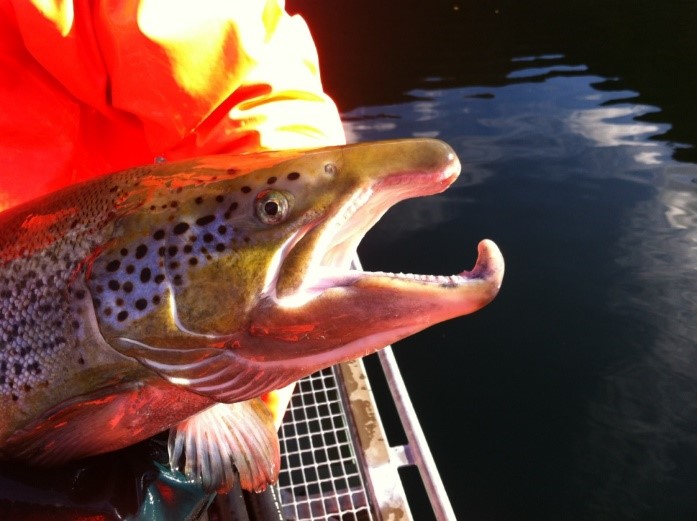Research facility at Matre – for common-garden experiments

Eyed salmon eggs from controlled experiments at Matre. Photo: Monica Solberg
The research station, which is a full-scale aquaculture farm, is the core facility for the institutes experimental research on salmonids and is extensively equipped for studies of all life stages, both in fresh water (>400 fish tanks) and in sea water (tanks or sea cages – 2 marine rearing cites). The research station was upgraded in 2006, and the top modern facilities allows for both small and large-scale studies under highly controlled conditions. Among other things, our group has used this facility to conduct a very wide-range of common-garden studies on domesticated and wild Atlantic salmon 2-9,21,95,112-116. Based upon these long-term studies, we have now produced what we think is the most extensive domesticated, hybrid, back-cross and wild population of salmon. This pedigree-controlled population is currently held at the facility and available for further experiments. It has for example helped elucidate the role of the vgll3 locus in determining maturation in salmon 117, and identify the manner in which the genome utilizes three sets of chromosomes 8.

Photo: Monica Solberg

Photo: Monica Solberg
Publisert: 29.12.2017
